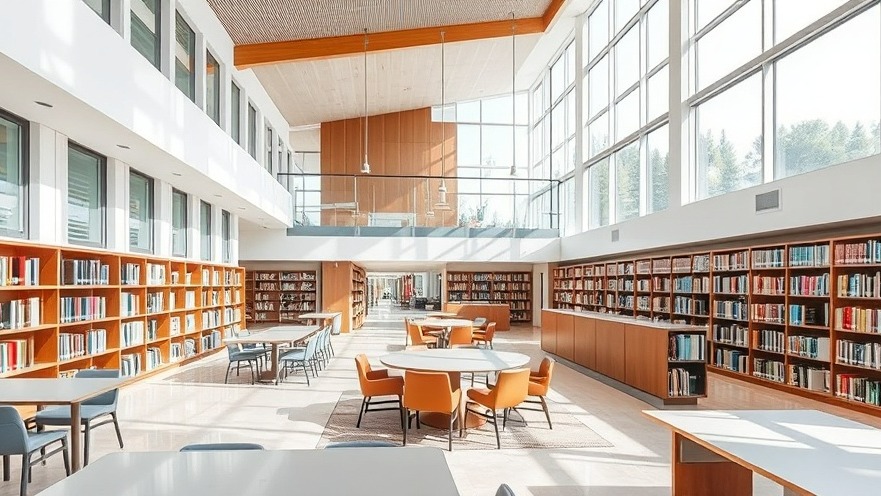
Redefining Community Spaces: The North Boulder Library
The North Boulder Library stands as a testament to modern architectural practices intertwined seamlessly with community engagement and environmental sustainability. Designed by WORKac, this library not only serves as a resource for information but also acts as a vibrant community hub where creativity ignites and connections flourish. Positioned amid residential areas and natural surroundings, the library’s design is defined by its playful aesthetics and innovative structural features.
Community Engagement: A Blueprint for Success
From the very outset, the success of the North Boulder Library project hinged on extensive community involvement. Over a period of three years, WORKac engaged with local residents through twenty public presentations, ensuring that the architectural design directly reflected the aspirations and input of the community. The library was designed with multiple access points and facades, demonstrating a commitment to inclusivity and functionality. This participatory approach enabled the architects to tailor the project to the community's specific needs, transforming a long-awaited dream into reality.
Playful Architecture: Merging Form and Function
The library pushes traditional architectural boundaries, integrating playful elements tailored for both adults and children. A standout feature is the dynamic slide that spirals from the community center balcony to ground level, designed to engage younger visitors and encourage playfulness. Moreover, the thoughtful landscaping, including a rainwater garden filled with indigenous plants, enhances the library’s environmental consciousness while providing a beautiful recreational space.
Sustainable Solutions for Modern Living
Boulder is known for its stringent environmental standards, and the North Boulder Library exceeds expectations with its sustainable features. Rooftop solar panels generate a significant portion of the library's energy needs, fostering a commitment to renewable energy. The choice of materials and innovative structural solutions not only enhance its durability but also align with Boulder’s eco-friendly ethos. Even the interior design reflects sustainability through the use of natural light and sustainable materials.
Supporting Community Needs
The library is equipped with versatile spaces designed to support various community programs, including the popular Boulder Reads literacy initiative and a dedicated Maker Kitchen. These programs respond to the diverse needs of the community, encouraging creativity, learning, and togetherness. The architects aimed to harmonize education and community interaction, establishing the library as a genuine resource for residents. The ground floor, boasting private storytelling nooks and collaborative workspaces, addresses both active learning and leisure, showcasing a balanced approach to design.
Architectural Challenges and Triumphs
While the original design envisioned a more expansive structure, budget constraints and the transformative impact of the COVID-19 pandemic necessitated a pivot. Nonetheless, the spirit of the project remained unchanged. The crucial aspects, such as the building's iconic shape and essential green features, were maintained despite some original details being trimmed back. The result is a lean but functional library that reflects both the community's heart and the landscape's beauty.
The Future of Public Architecture
The North Boulder Library shines as an exemplar of inclusive, sustainable public architecture. As cities evolve, the library stands as a model for how architecture can adapt to community needs while embracing its environment. By prioritizing functionalities and values that matter most to residents, WORKac has set a new standard for public spaces. This library not only symbolizes the idea of a place for learning and community but also illustrates a shift towards a collaborative approach toward public design.
The North Boulder Library reflects the culmination of community vision, sustainable practices, and innovative design, positioning it as an essential civic space for generations to come.
 Add Row
Add Row  Add
Add 




Write A Comment